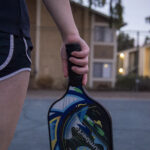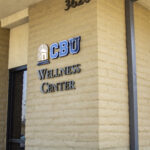CBU men’s and women’s cross-country begin their new season welcoming many new athletes and a new head coach. Their vision for the season is not only to get ahead but also to accomplish this task as a unified team.
With only six races this season, the Lancers’ cross-country teams are limited with time to prepare their runners for next year, where they will be able to qualify for the National Collegiate Athletic Association national championships.
Having a solid foundation of returning runners, the freshmen and transfer athletes have a core group of returners that they can be encouraged and influenced by.
“We have a lot of good leadership with our older runners that can act as mentors. Most of our juniors and seniors are red-shirting, so we need a lot of our freshman stepping up for the team,” said head coach Ben Gall.
On the roster for the cross-country teams, there are nine freshman in total – seven runners for the men and two for the women. Both women are red-shirting this season.
In high school, men and women both run a 5k (3.1 miles) for their races. Coming into college, they will have to adapt to the men running an 8k (4.8-5 miles) and eventually up to a 10k (6.1 miles). The women must also transition, as now they are expected to race a 6k (3.8 miles).
“Athletes come in, and they’re scared of failure. To be successful, they have to run twice as hard and twice as long as before. That’s where the mentoring from the older guys come in,” Gall said. “They can’t make excuses, they will need to just put themselves out there and work hard. Some will and some won’t, we just have to work through that.”
Individuals alone do not win a meet, nor can the team qualify for an NCAA national championship by having just a few strong times. Runners may get a “personal best” individual time, but everyone on the team has to participate in the goal in order to be successful.
Mitchell Moore, a red- shirting junior, said, “To make the NCAA championship, we need to work together, not take days off, not make excuses and we need to believe that we can make it to nationals.”
Since the women face tougher competition in the PacWest, their needed improvements are a little different than the men’s. Naturally, the women runners are closer and are less competitive than the men.
“As a group, they are more afraid to take risks and expose themselves, which is something we are getting better at. They are very comfortable together, they have become one another’s comfort zone,” Gall said. “We are working on having them not worry about the result, but the process and putting themselves out there.”
With an around-the-clock training schedule, the cross- country team works hard to improve themselves and each other. This comes from both physical and mental training. Bonding as a team during practice as well as in the off- time is essential to growing stronger as a team and encouraging one another.
“Monday, Wednesday and Fridays are a 60-70 minute run in the morning and 30 minutes in the afternoon,” Moore said.
“Tuesday and Thursdays are speed workouts in the morning and weights in the afternoon. Saturday is race day. Sunday is 80-100 minute long run.”
To make sure each individual is being communicated with efficiently, Gall meets with each runner for 30 minutes every other week. During this time, they catch up on how the athlete is doing in the process of improvement, their role on the team, school and outside concerns that may be affecting their performance.
The men’s and women’s cross-country team members say they look forward to working toward the ultimate goal of being a competitor in a NCAA national championship come next season.
Until then, their next race will be Oct. 6, at the UC San Diego Invitational at 10 a.m.


